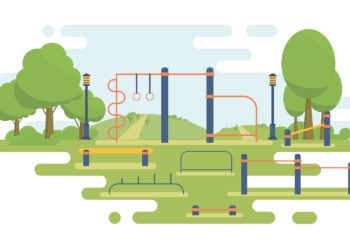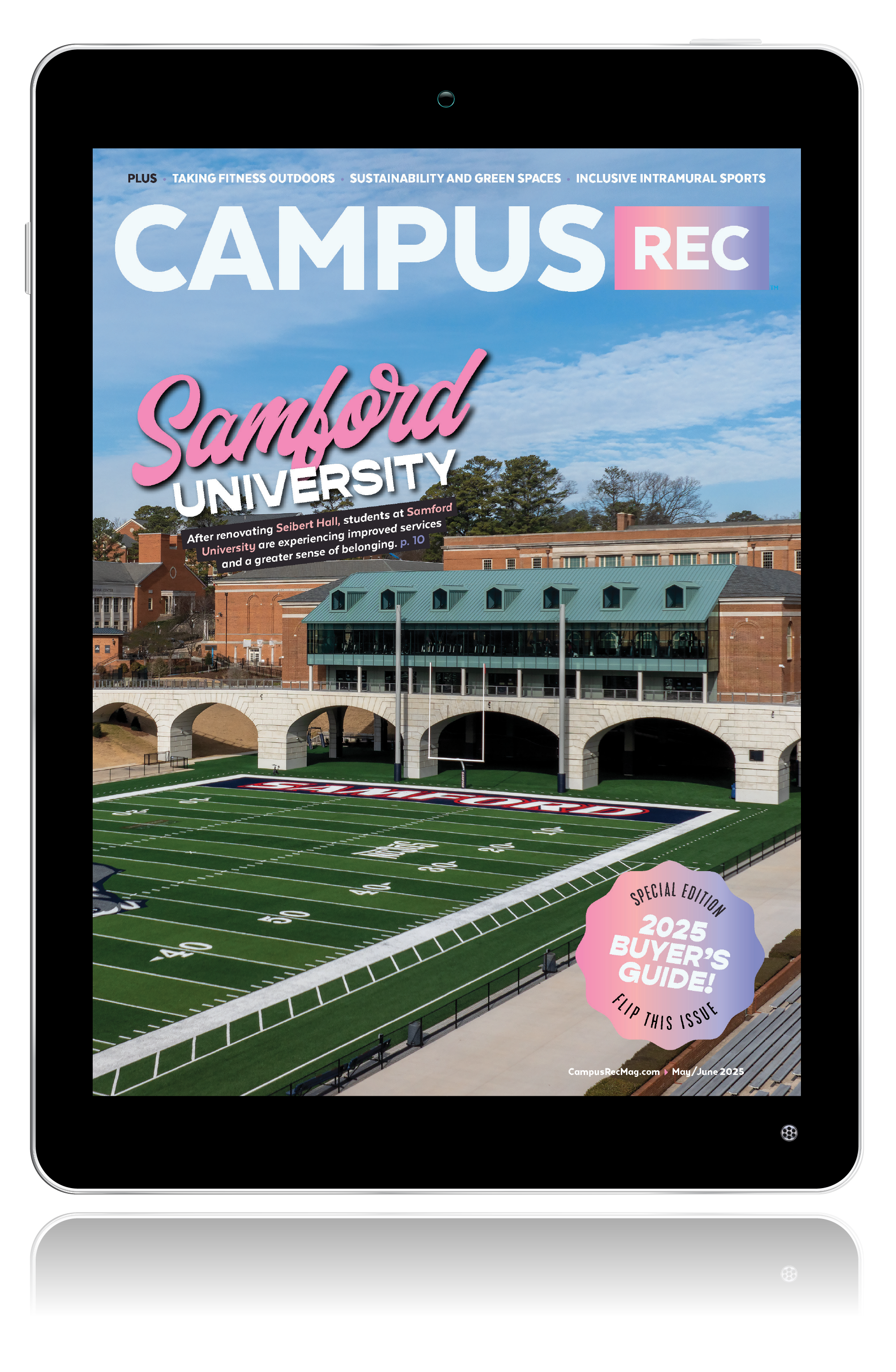The recipe for a successful indoor pool environment doesn’t rely on just one ingredient, but rather a host of different design and operational factors that work in synergy to help create and maintain optimal indoor air quality (IAQ).
Some campus recreation managers might believe outdoor air is the only ingredient needed for healthy IAQ. However, a facility can still fall short on IAQ even though it complies with the outdoor air requirements of American Society of Heating Refrigerating Air-Conditioning Engineers’ (ASHRAE) Standard 62 “Ventilation for Acceptable Indoor Air Quality. Outdoor air is the main ingredient, but the recipe is incomplete and optimal IAQ is rarely accomplished without other vital support ingredients.
Some of the important support IAQ factors are:
- Chloramines Reduction;
- Air Distribution Efficacy;
- System Design Upgrades to Meet Codes;
- and Maintenance and Operation Facilitation as per Design Intent.
Chloramine Reduction
Dichloramine and trichloramine, (chloramines) are a gaseous byproduct of chlorine chemically bonding to water-borne contaminants to form a heavy gas that stratifies just above the water surface in the swimmers’ breathing zone. Chloramines are proven respiratory irritants that affect health of swimmers and spectators.
Diluting chloramines with outdoor air is one solution, however air distribution design is key. Furthermore, it’s difficult to exhaust chloramines above the water surface with conventional return air systems, which typically aren’t positioned for that purpose.
Two new product concepts that fall under state-of-the-art are source capture/exhaust plenum type devices and the chlorine alternative of ultraviolet (UV) water disinfection.
Source capture/exhaust plenum-type of devices have been developed to draw and exhaust chloramines directly off the pool surface. In new construction, the device can be integral into the gutter in one side of the pool. In retrofits, the device can be stationed on the deck poolside.
UV water disinfection minimizes chlorine use, thus fewer chloramines develop.
Air Distribution
Just because a natatorium has ductwork, doesn’t necessarily mean the air supply from the dehumidifier is getting down to the swimmers and spectators’ breathing zones. Besides poor IAQ, improper air distribution design can also result in window, wall and metal surface condensation, the latter which leads to corrosion and building envelope deterioration.
System Design Upgrades to Meet Codes
A 20-year-old dehumidifier may no longer meet today’s codes, especially with today’s outdoor air standards.
An older natatorium might operate healthier with a state-of-the-art dehumidifier retrofit that incorporates more outdoor air, or uses high technology equipment to allow better monitoring/control for maintaining tight temperature and humidity tolerances.
Maintenance and Operation
Like all mechanical devices, a natatorium’s dehumidifier and pool equipment need regular maintenance. Outdoor air dampers need adjusting, air filters need changing, UV water disinfection lamps need replacement, pool water requires hourly or at least daily water chemistry testing, and other periodical checks are critical to maintaining proper IAQ. Deviating from the building’s original water and space temperature design could lead to insurmountable humidity loads for the dehumidifier.
There are thousands of natatoriums that exhibit the recipe for IAQ success, but also many that have fallen short. The recipe is no secret. Following building codes, standards, such as ASHRAE 62, and the ASHRAE Handbook chapter on natatorium design is critical to success. A dehumidifier manufacturer can be invaluable for confirming whether the natatorium’s design intent has been maintained and IAQ is optimal.
Ralph Kittler, P.E., is co-founder and vice-president–sales and marketing, Seresco USA, Decatur, Ga., a manufacturer of natatorium dehumidifiers and IAQ equipment. Kittler is the author of the 36-page “Natatorium Design Manual” and a Professional Design Hour (PDH) video on natatorium design for both pool operators and engineers. Both are available free at www.serescodehumidifiers.com. Kittler can be reached at ralphkitter@serescodehumidifiers.com or 770-457-3392 x 150.











IAQ is simple…
Employ a chlorine feed system capable of completing the process of oxidation for a facility’s worst case demand in a timely fashion. Feed systems that are incapable of keeping up with bather loads allow chlorine to combine with introduced waste products and form byproducts of incomplete oxidation, aka chloramines. Supplemental systems such as UV for chloramine destruction, or source capture equipment for chloramine removal are unnecessary when appropriately sized high capacity feed equipment with venturi injection is used. This recipe has been known for many years within the Aquatics industry and commercially available for a price tag far less than the cost of supplemental systems since 2002. I hope to see this vital understanding included in facility development and design criteria in the future.
IAQ is simple…
Employ a chlorine feed system capable of completing the process of oxidation for a facility’s worst case demand in a timely fashion. Feed systems that are incapable of keeping up with bather loads allow chlorine to combine with introduced waste products and form byproducts of incomplete oxidation, aka chloramines. Supplemental systems such as UV for chloramine destruction, or source capture equipment for chloramine removal are unnecessary when appropriately sized high capacity feed equipment with venturi injection is used. This recipe has been known for many years within the Aquatics industry and commercially available for a price tag far less than the cost of supplemental systems since 2002. I hope to see this vital understanding included in facility development and design criteria in the future.